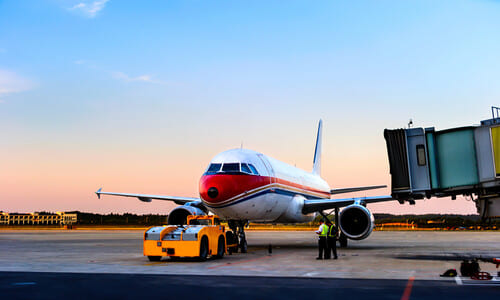
Fatal plane crashes involving commercial airlines don’t happen often, and the last one in the US occurred in 2009. However, small plane crashes have increased in recent years, and airline passengers may suffer injuries or fatalities on a plane that does not crash. According to the National Transportation Safety Board (NTSB), 163 people suffered in-flight injuries from turbulence alone between 2009 and 2022.
No matter what kind of aviation accident you’ve experienced, you could be dealing with medical bills, lost income, pain and suffering, and other damages. The airlines have formidable legal teams who work to avoid paying out claims from injured people, so you need an experienced aviation accident lawyer on your side. In fact, you should seek legal advice as soon as possible after your aviation accident in order to protect your rights.
What Can a Salt Lake City Aviation Accident Attorney Do About?
We will work to determine what happened and who may have been at fault. Additionally, we will calculate your damages so we can pursue compensation from the responsible party. These damages may include:
- Medical bills. Plane crashes often result in severe injuries for survivors, including head and brain injuries, back or spinal cord injuries, broken bones, internal injuries or bleeding, and more. We’ll ensure that you receive compensation for both your current medical bills and any future costs for continuing care.
- Lost income or earning potential. Many people involved in aviation accidents are out of work for weeks or months and may have only limited paid time off. You deserve compensation for both paid and unpaid time off, and if you become permanently disabled from your injuries, we can also seek damages for lost earning potential.
- Permanent disability or disfigurement. Aside from any effect on your income, a permanent disability or disfigurement can negatively impact many other areas of your life.
- Pain and suffering. These types of accidents often involve tremendous physical pain, as well as emotional suffering and anguish. Frequently people who survive plane crashes develop chronic physical pain from their injuries, and they may also suffer from PTSD or other mental health issues due to the trauma. These are considered non-economic damages, and you can seek compensation for them.
- Loss of quality of life. This can be related to damaged relationships, inability to continue with your hobbies or interests, loss of consortium or companionship, and other ways in which the aviation accident has permanently affected your happiness.
- Wrongful death. Losing a loved one in an aviation accident is devastating, and many of the above damages still apply, but for the surviving family members. You may be forced to grieve while struggling to pay final medical bills, take care of your typical expenses without your loved one’s income, and cope with losing your loved one’s companionship and support. We can help you pursue damages so that you can focus on yourself and your family as you work through your grief.
Types of Aviation Accidents and Potential Causes
Depending on the type of aviation accident you suffered, it may take anywhere from a few months to a year or more to learn the cause, but we will work tirelessly to gather evidence and build your case as quickly as possible. Here are some of the different types of aviation accidents and common reasons they can happen:
Plane Crashes
If you or a loved one were involved in a commercial plane crash, it would likely be one of those cases that takes a long time to resolve. Evidence of the accident can be distributed over a wide geographical area, and the NTSB may spend months investigating what happened. This involves recovering as much of the wreckage as possible and studying it for indications of what went wrong. Typically the NTSB will release a preliminary report within a few days of the plane crash but may not release their final report for a year or more.
In addition to studying other parts of the plane, the NTSB will make every effort to recover the plane’s black box, which logs more than 146,000 parameters, plus cockpit conversations, on an aircraft. The black box is often pivotal in determining the cause of a crash, and if it can’t be found, it may be difficult to definitively say what caused the accident. In most cases, the black box is eventually recovered, but occasionally it isn’t.
Studying the black box data alone can take considerable time, and experts may disagree about what some data points mean. This is one reason why it often takes a long time for the final NTSB report to be released. However, in some instances, this data can speak strongly to the cause of the crash.
Who is liable for a plane crash? Depending on what the evidence indicates, there can be numerous liable parties:
- The plane manufacturer. In 2018 a Boeing 737 crashed off the coast of Indonesia, then a second 737 crashed in Ethiopia in 2019. It was later determined that a flawed design led the plane’s Maneuvering Characteristics Augmentation System (MCAS) to force the plane into a nosedive due to faulty sensor data. Boeing faced both criminal and civil charges, which they resolved with a $2.5 billion dollar settlement.
- A component manufacturer. If the plane had a component made by another manufacturer that caused the accident, that company might be liable.
- Pilot error. Flying a plane, particularly a commercial one with many passengers, is an incredible responsibility. If the pilot makes an error that leads to an aviation accident, we have to consider the factors that may have affected the pilot. In some cases, the airline may have been negligent in ignoring a pattern of problematic behavior, failing to perform regular drug tests, etc.
- The airline. We’ve already discussed one way an airline might be negligent, but there are others. In some situations, the pilot did their job correctly, but the plane suffered a mechanical problem due to a lack of maintenance. If the airline did not properly care for the plane and it crashed, then the airline could have been negligent.
- A company that serviced the plane. Sometimes the airline performs due diligence in pursuing regular maintenance for their planes, but a service worker from a third-party company makes a mistake when fixing or replacing a component. When this occurs, the third-party company might be negligent.
- Air traffic control. Managed by the FAA, air traffic controllers also have an incredibly difficult job. If they make a mistake, it could lead to a plane crash. Although it is generally very hard to sue the government, under certain circumstances, it is possible to sue the FAA if their negligence caused a plane crash.
Not every plane crash involves a commercial airline. As we discussed earlier, most aviation accidents in the US involve small planes that may only carry a pilot or a few passengers. Many of the same possible causes apply to small plane crashes, with the exception of airline negligence. The NTSB also investigates these accidents, and due to the smaller amount of evidence, they may complete a final report somewhat sooner than they would for a commercial airline accident.
In-Flight Injuries
Surprisingly, people are injured each year on flights that land safely. These are called in-flight injuries, and they can occur in a number of ways:
- Falling luggage. The airline staff ensures overhead luggage compartments are securely closed before takeoff. If they don’t, a compartment may pop open, and passengers could be hurt by falling luggage. Often the airline is negligent in these cases, but in a few situations, the manufacturer of a defective compartment door may be at fault.
- Runaway drink and food carts. Flight crews are also trained to lock these carts in place when they aren’t moving down an aisle. If a cart isn’t properly locked, it could roll away and injure someone – arm and shoulder injuries often result from a cart striking a passenger in an aisle seat.
- Lack of medical equipment or staff training. University of Pittsburgh researchers have estimated that around 44,000 people suffer medical emergencies on flights each year. Because this is an expected problem, flight crew members have medical training, and planes are required to keep certain medical equipment and supplies on hand. If a passenger suffers a medical emergency and the staff is inadequately trained, or essential medical equipment is missing, the airline could have been negligent.
- In-air assaults. If a passenger is assaulted on a plane, flight crew are trained to step in and defuse the situation. Airlines also have a responsibility to head off problems by refusing to let anyone board if they appear intoxicated. If the airline failed in these efforts, it may have been negligent.
- Turbulence. The airline isn’t responsible for unpredictable air currents, but the flight crew will direct passengers to buckle up when turbulence occurs. Turbulence can also cause other in-flight injuries, such as falling luggage or other loose items striking a passenger.
If you suffered an in-flight injury, please speak with an aviation accident attorney to help determine if the airline was negligent.
Reach Out to Valley Law, Your Salt Lake City Aviation Accident Law Firm
If you or a loved one has been involved in an aviation accident, we understand the stress and uncertainty you may be experiencing. That’s why we encourage you to reach out to Valley Law Accident and Injury Lawyers for a free consultation.
During the consultation, we’ll take the time to listen to your story and assess the details of your case. We know that every aviation accident is unique, which is why we’ll work with you to develop a personalized plan of action.
Our team of experienced Salt Lake City personal injury attorneys will be there to answer any questions you may have and explain all of your options for seeking compensation. With our help, you can feel confident that your case is in good hands. Don’t hesitate to contact us today. Call 801-810-9999.



